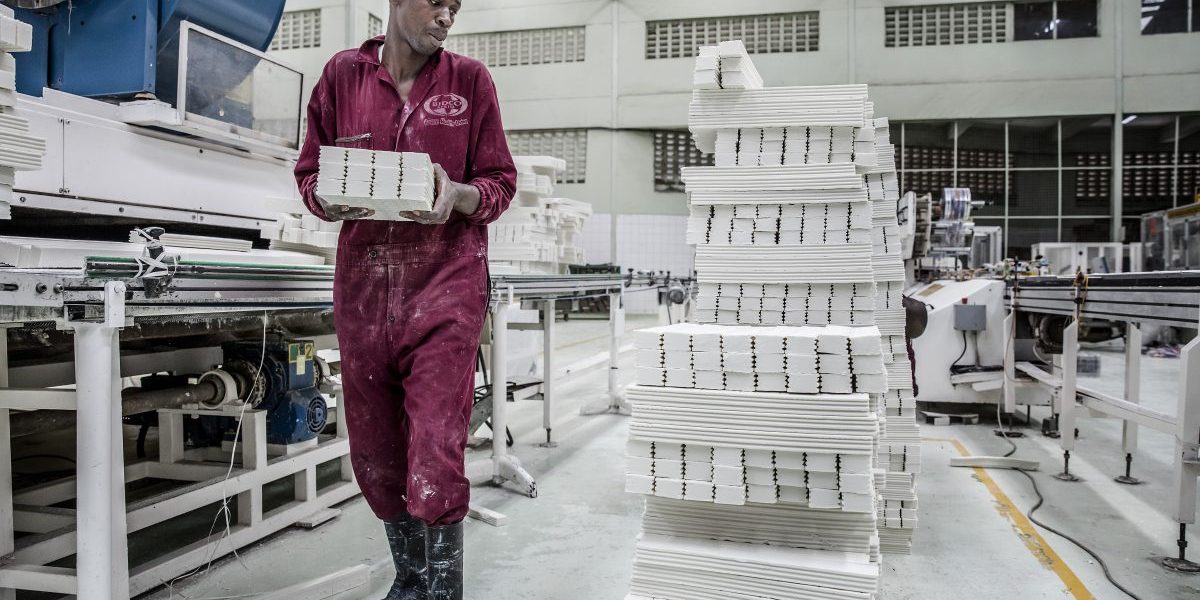Synopsis:
Research undertaken by the Centre for Competition, Regulation and Economic Development (CCRED) and the Zambia Institute for Policy Analysis and Research (ZIPAR) assessed the soap, detergent and cosmetics value chains in South Africa and Zambia. The paper maps out the cosmetics, soap and detergent value chains, examines the competitiveness of the industries in South Africa and Zambia, and explores the industrial policy and regulatory instruments that are currently used by policymakers. It also seeks to highlight the potential for mutually beneficial industrial growth and employment opportunities.
Key findings:
All references to ‘products’ denote ‘soaps, detergents, cleaning and polishing preparations, perfumes and toilet preparations’
- South Africa has a much larger, more sophisticated and more mature soap, detergent and cosmetics industry than Zambia.
- Zambia’s exports of manufactured soaps and detergents, cleaning and polishing preparations, perfumes and toilet preparations have been growing over the past six years; however, the country still faces a trade deficit in the same products.
- South Africa’s exports of the above products are 20 times the size of Zambia’s exports, averaging $865.8 million over the period 2010–2015.
- Zambia’s exports of the same products averaged 0.3% of South Africa’s total imports, whereas South Africa’s exports accounted for 70% of Zambia’s total imports of soaps, detergents, cleaning and polishing preparations, perfumes and toilet preparations from 2010–2015.
- South Africa’s exports of soaps, detergents, cleaning and polishing preparations, perfumes and toilet preparations to Africa declined by 22.7% between 2013 and 2015. This may be attributable to the weak rand, although South Africa’s total exports of soaps to Africa grew rapidly from $75.9 million in 2005 to more than $464.2 million in 2013, with a compound annual growth of 25.4%.
- Despite this success, the South African industry operates below its optimum production capacity and small firms generally struggle to compete effectively. Barriers for small firms include high input costs, owing to the high cost of raw and packaging materials; barriers to accessing supermarkets; limited access to finance, particularly for advertising; skills shortages; challenging regulations and standards such as compliance with good manufacturing practices; a failing bio-diversity permit system; and expensive export certification requirements.
- Local packaging in Zambia is considered to be expensive and of poor quality. Packaging is a critical factor hindering the competitiveness of Zambia’s soap, detergent and cosmetics industry. Additionally, local firms struggle to access shelf space in supermarkets because of the issues with packaging.
- The South African soap, detergent and cosmetics industry is supported by relatively established contract manufacturing and cheap 3D printing technology in the packaging subsector.
- Zambia has a dominant firm in the soap and detergent industry that has penetrated regional markets. However, most firms in this and the cosmetics industry have low production capabilities owing to a dearth of quality packaging, brand awareness and export capabilities. This results in firms in Zambia operating below their production capabilities and failing to expand and grow their business or achieve economies of scale.
- Many factors contribute to the limited growth of the Zambian soap and detergent industry: high input costs owing to the taxes and compliance fees levied on imports of key chemicals and exacerbated by the depreciation of the kwacha against major foreign currencies; high cost of quality packaging; high cost of finance required for investing in machinery, technology and product upgrading; competition from cheaper imports from the East and South Africa; increasing supermarket supply demands; and the lack of recognition of Zambia Bureau of Standards’ certification in export markets.
- The trade deficit in soap, detergent and cosmetics in the Southern African region presents opportunities for increased industrial production and import substitution.
- The paper recommends that Zambia and South Africa address country-specific factors that are limiting the growth of firm capabilities and the ability to acquire scale and access lucrative markets:
- Zambia and South Africa should produce cosmetics from natural products, which will lessen their reliance on chemical inputs.
- Zambia and South Africa should engage supermarkets, which are important routes to market for consumer goods and will open up shelf space for regionally produced products.
- Zambia and South Africa should operationalise industrial clusters for the manufacture of soaps, detergents and cosmetic products, which will create firm competitiveness. Firms can be incentivised to produce soaps, detergents and cosmetic products for hotels, lodges and supermarkets’ house brands.
For Zambia:
- Produce quality and appealing packaging: the soap, detergent and cosmetics industry is consumer-driven and relies heavily on brand awareness.
- Facilitate domestic and regional market access that will be facilitated by a supermarket regional procurement strategy.
- Provide access to affordable finance.
For South Africa:
- Make more funding available for export missions.
- Leverage IDC shareholding of Le-Sel Research to support entrants. (Le Sel is a manufacturer 70% owned by IDC which provides R&D, testing, packaging design and product development services to the industry for a fee. Government could assist new entrants with subisidisation of this fee).
- Engage input suppliers such as Sasol to match government incentives by providing competitively priced inputs and purify petroleum jelly for the domestic industry.

